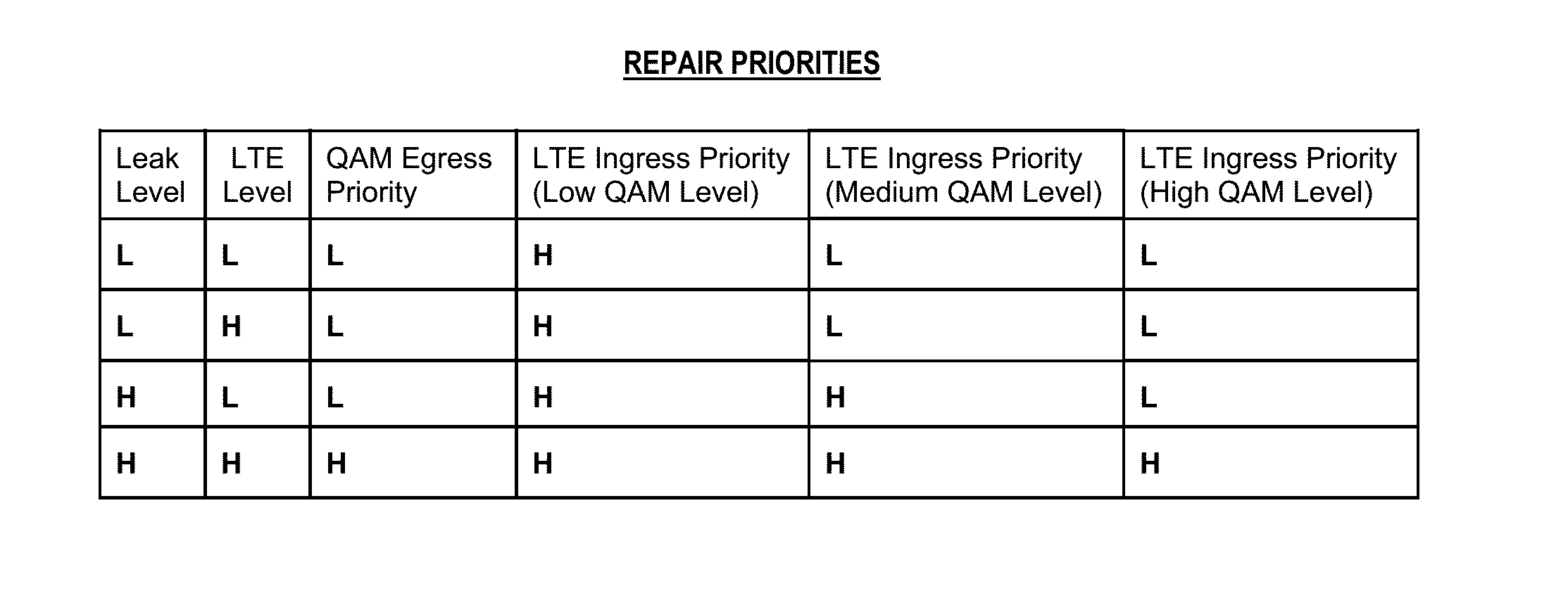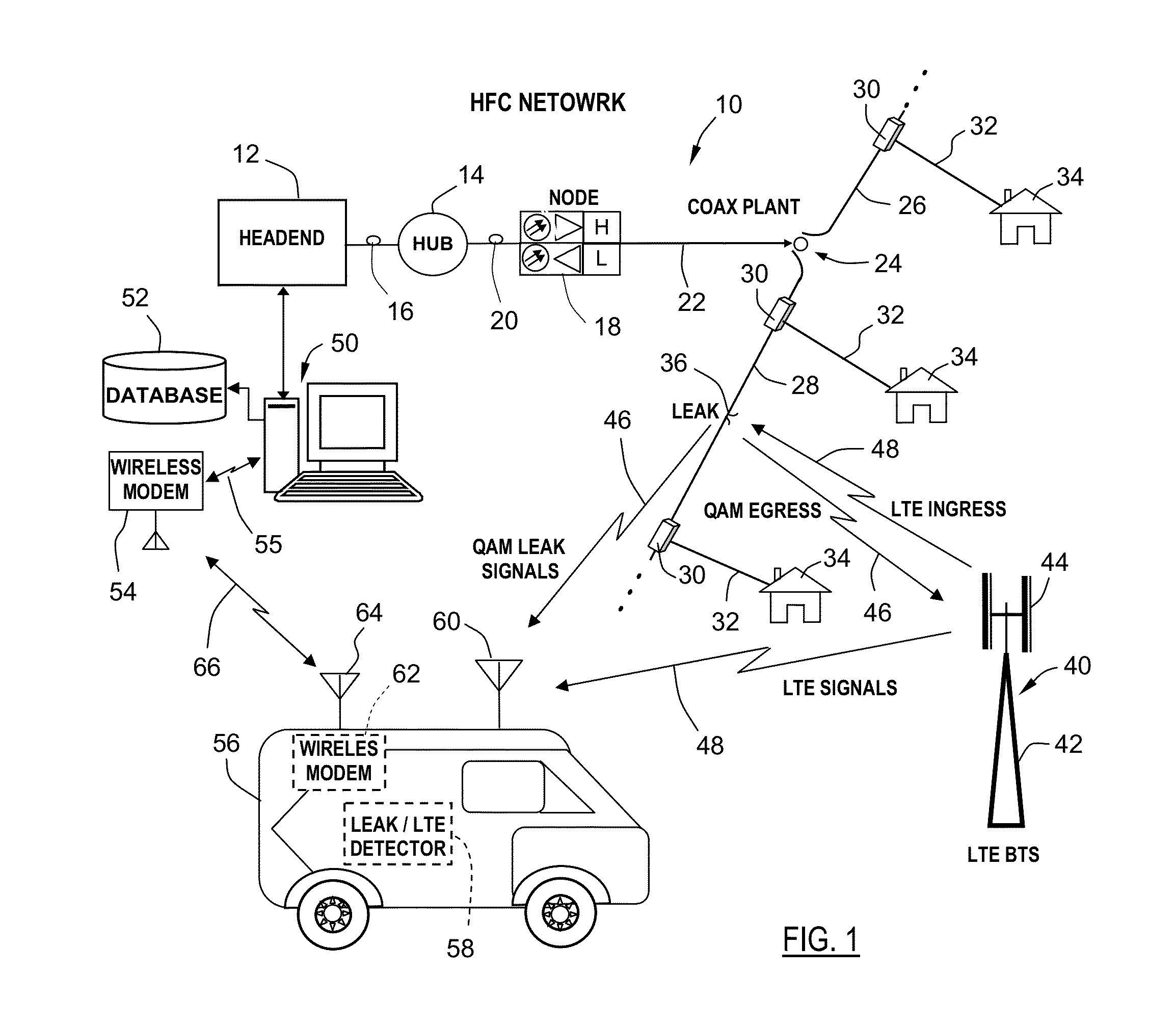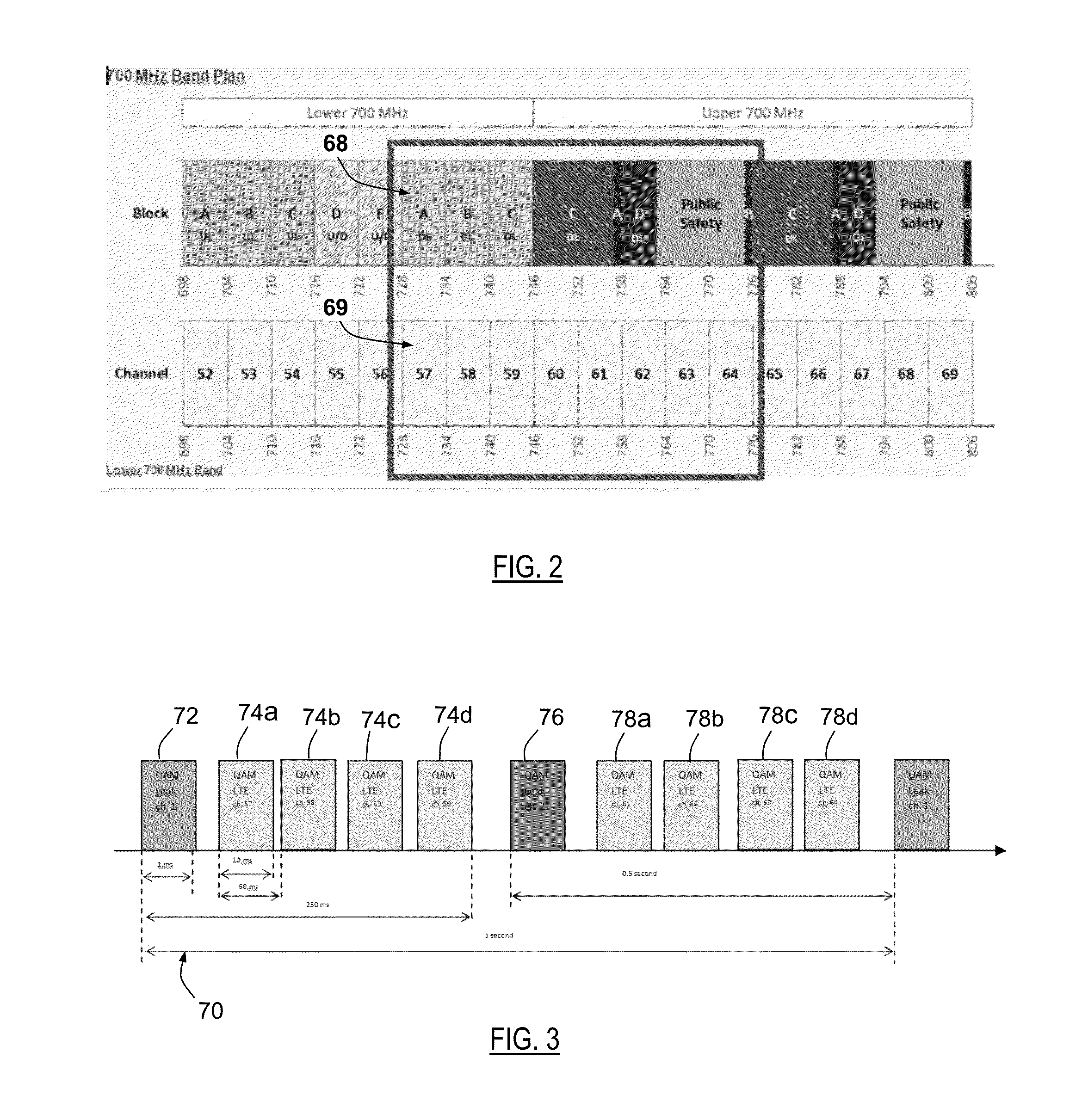Prioritizing repair of signal leakage in an hfc network
a technology of hybrid fibercoax and signal leakage, applied in the direction of orthogonal multiplex, transmission monitoring, instruments, etc., can solve the problem that the technology that allowed cable network operators to detect and measure leaking qam channels at or near lte frequencies was not available, and cable operators had minimal visibility of these higher frequency leakage problems
- Summary
- Abstract
- Description
- Claims
- Application Information
AI Technical Summary
Benefits of technology
Problems solved by technology
Method used
Image
Examples
Embodiment Construction
[0033]The QAM Snare® system, manufactured by Arcom Digital, LLC, Syracuse, N.Y., detects and locates QAM leakage in a CATV cable network, utilizing a cross-correlation process and a time-difference of arrival (TDOA) algorithm. The leakage detection process can be summarized as follows. Samples of a QAM channel are captured at a location within the network and time stamped using a Global Positioning System (GPS) reference clock. These samples are treated as a reference and are called “reference samples.” The reference samples are subsequently transmitted over a wired or wireless network to a leakage detector in the field, which is likely installed in a technician vehicle (e.g., the QAM Snare® Monitor™ or Navigator™ leakage detector by Arcom Digital, LLC). The leakage detector similarly uses a GPS reference clock for timing synchronization. The detector receives over-the-air QAM signals leaked from the network, via a locally connected antenna. The detector samples the QAM leakage sign...
PUM
 Login to View More
Login to View More Abstract
Description
Claims
Application Information
 Login to View More
Login to View More - R&D
- Intellectual Property
- Life Sciences
- Materials
- Tech Scout
- Unparalleled Data Quality
- Higher Quality Content
- 60% Fewer Hallucinations
Browse by: Latest US Patents, China's latest patents, Technical Efficacy Thesaurus, Application Domain, Technology Topic, Popular Technical Reports.
© 2025 PatSnap. All rights reserved.Legal|Privacy policy|Modern Slavery Act Transparency Statement|Sitemap|About US| Contact US: help@patsnap.com



